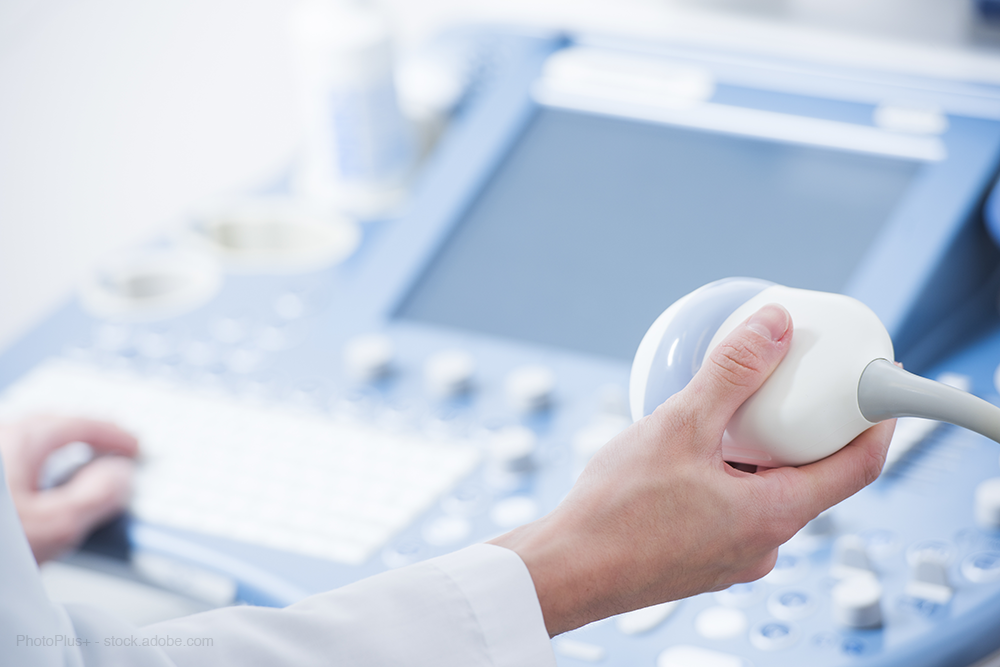Ultrasound-Guided Breast Biopsy Gains Popularity
Why researchers say practitioners and patients alike will be moving toward ultrasound-guided breast biopsies.

In 2019, according to the American Cancer Society, an estimated 268,600 women will be diagnosed with invasive breast cancer, and an additional nearly 63,000 women will receive word they have non-invasive disease. To confirm the accuracy of these diagnoses-and to properly stage any newly identified cancers-these women will undergo approximately 1.6 million breast biopsies.
Core needle biopsy still remains the most common method to determining whether a woman has a benign or malignant finding, and ultrasound-guided breast biopsy is beginning to gain traction among radiologists for quality patient care. It’s also gaining popularity among patients themselves.
According to a new market survey, conducted by Allied Market Research, the global market for breast biopsy overall is expected to grow and expand significantly over the next four years. Estimates have pegged that the growth will balloon from $977 million in 2016 to approximately $1.42 billion by 2023. This increase is based on an anticipated compounded 5.3% annual bump.
Related article: Dense Breast Reporting Regulations Increasing
And, industry experts predict ultrasound-guided breast biopsy will be the most rapidly growing segment of the breast biopsy market. They expect ultrasound-guided breast biopsy to grow at a compounded rate of 6.1% annually between 2017 and 2023, outpacing other biopsy options.
There are several reasons behind this steady expansion of ultrasound guidance, according to the market survey. Using breast ultrasound this way is less invasive because it uses sound waves rather than radiation to locate any breast abnormalities or lumps. In addition, using breast ultrasound for biopsy takes less time, produces less scarring on the breast for the patient, is less expensive, and requires less recovery time.
In addition to technologies currently on the market, there are investigative efforts underway to augment how breast ultrasound is used in conducting biopsies. For example, at Washington University at St. Louis, researchers are using near-infrared light to locate masses in the breast and to take pictures of the total hemoglobin concentration in the mass. Hemoglobin absorbs the near-infrared light. Consequently, the higher the hemoglobin concentrations in the mass, the stronger the suspicion of cancer while lower hemoglobin levels indicate a mass is likely benign.
Based on this and other ongoing investigative efforts, the United States and North America are expected to see a significant uptick in the use of breast ultrasound for guided biopsies, according to market research. The majority of that growth can be attributed to the development and increased use of new technologies, more launches of imaging systems, and an existing sophisticated healthcare infrastructure.
The European market will also likely see greater use, the market research indicates, due to the rising prevalence of breast cancer, as well as greater improvements and advancements to the technology. Strengthening breast cancer awareness campaigns can also be credited with the expansion of the use of breast ultrasound for guided biopsy in the Asia-Pacific market.
Still, there will be limitations in just how much the ultrasound-guided breast biopsy market will be able to expand. The possibility that some patients could bleed after the biopsy and develop a hematoma could negatively impact how much this technique is used in patient care. In addition, any incidences of patient discomfort can also be a drawback, creating doubt about whether ultrasound-guided breast biopsy is the best option.
The most significant factor impacting the growth of ultrasound-guided breast biopsy, however, could be cost. For patients with insurance, the out-of-pocket expense for an ultrasound-guided breast biopsy hovers around $500. Women without insurance could receive a $2,000 or more bill for services rendered. For practices and hospitals, the cost of the ultrasound machines could also slow market expansion.
New AI-Enabled Portable Ultrasound May Facilitate 50 Percent Reduction in Cardiac Imaging Scan Time
March 28th 2025Artificial intelligence (AI)-powered measurement capabilities provide key features with the Compact Ultrasound 5500CV device, which was unveiled at the American College of Cardiology (ACC) conference.
Can Ultrasound-Based Radiomics Enhance Differentiation of HER2 Breast Cancer?
March 11th 2025Multicenter research revealed that a combined model of clinical factors and ultrasound-based radiomics exhibited greater than a 23 percent higher per patient-level accuracy rate for identifying HER2 breast cancer than a clinical model.